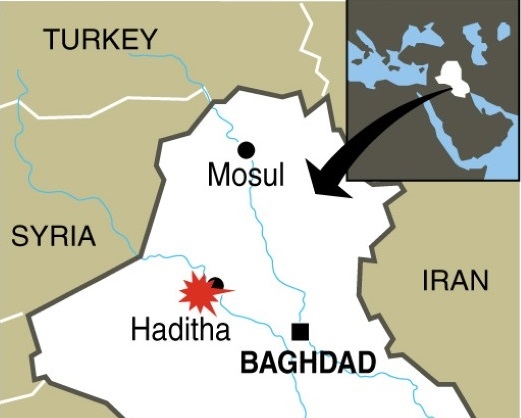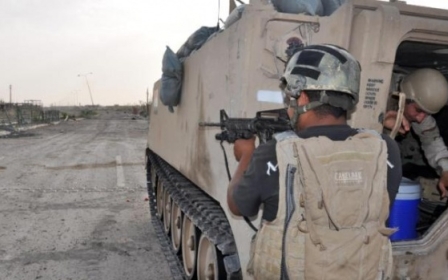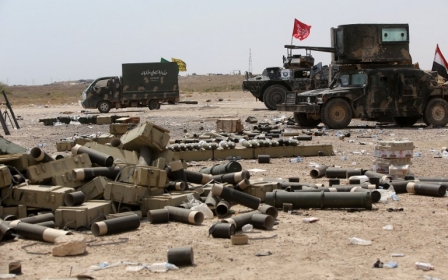IS launches ‘massive offensive’ in Iraq’s Anbar

The Islamic State group is conducting a fierce offensive in Anbar province and has killed at least 25 Iraqi soldiers in 72 hours, Iraqi security sources said on Tuesday.
The IS drive is now in its third day and is concentrated around Haditha, a town 100km northwest of the provincial capital of Ramadi, where Iraqi forces backed by US air strikes drove out IS militants in late December.
"We have given 25 martyrs in 72 hours," a tribal commander, Sheikh Abdallah Atallah, told AFP by phone from Haditha, an area that includes a key dam and has held off IS since 2014.
"It was one of the biggest offensives we have seen. It came from three directions," he said, adding that dozens were also wounded.
The mayor of Haditha, located in Anbar, confirmed the casualty toll. "We have more than 20 martyrs and more than 50 wounded. They are from the army, CTS (the counter-terrorism service), the police and the tribal fighters," Mabrouk Hamid said.
"Haditha was targeted Sunday by a massive offensive involving more than 40 vehicles, all armoured and some explosives-laden," Hamid said.
"They were destroyed by coalition and Iraqi air strikes," he said.
Both the mayor and tribal commander said IS had lost very large numbers of fighters in their failed assault.
The US-led coalition confirmed that it was providing support to the Iraqi forces defending Haditha, a strategic area where Sunni tribal fighters opposed to IS have resisted several previous waves of attacks.
"There have been several ISIL (IS) attacks near Haditha. None of these attacks have been successful" thanks to stronger aerial support, US-led coalition spokesman Colonel Steve Warren wrote on social media.
The US-led coalition, which began bombing IS positions in Iraq in 2014, on Tuesday said that it had managed to roll back the militants in Iraq and Syria, claiming that they had lost 40 percent of territory from its maximum expansion in Iraq, and 20 percent in Syria in 2015.
"We believe in Iraq it's about 40 percent ... And Syria, harder to get a good number, we think it's around 20," coalition spokesman US Army Col. Steve Warren told a press briefing in Baghdad.
"Taking together Iraq and Syria ... they lost 30 percent of the territory they once held," he said.
However the US figures for IS losses in Iraq and Syria were contradicted by the IHS Jane's think tank in December. Its analysis said IS had lost around 14 percent of its territory in 2015.
As well as Ramadi, the group's losses included the strategically important town of Tal Abyad on Syria's border with Turkey, the Iraqi city of Tikrit, and Iraq's Baiji refinery.
But the group continues to control vast areas of territory, with speculation rife about how long it will take for the Iraqi army and its allied tribes and militias to push on to Iraq’s second city Mosul, which was seized in June 2014.
According to sources who spoke to AFP, IS has been trying to shore up its positions in the western Anbar province since being pushed out of Ramadi.
"Daesh controls the village of Sakrana... but they are surrounded by our forces and we should clear it within hours," Atallah said, using an Arab acronym for IS.
"They used 20 suicide car bombs just for Sakrana - this is why they were able to take it," he said.
Hamid also confirmed that IS fighters were inside the village, east of Haditha.
The dam north of the city of Haditha is the country's second largest after the Mosul dam.
Both sources also said families were trapped in a district just north of Barwana called al-Shay, which IS fighters were able to seize.
"The area is only about two square kilometres. All the rest of the city and the main checkpoints are controlled by us," said Atallah, from the Jughaifi clan which has spearheaded tribal resistance to IS in the Haditha area.
"Several families, including children, are besieged there," he said.
"Iraqi security forces are currently trying to rescue them," said Ziad al-Nimrawi, from Barwana police.
They were not able to say exactly how many civilians were trapped.
Middle East Eye propose une couverture et une analyse indépendantes et incomparables du Moyen-Orient, de l’Afrique du Nord et d’autres régions du monde. Pour en savoir plus sur la reprise de ce contenu et les frais qui s’appliquent, veuillez remplir ce formulaire [en anglais]. Pour en savoir plus sur MEE, cliquez ici [en anglais].





